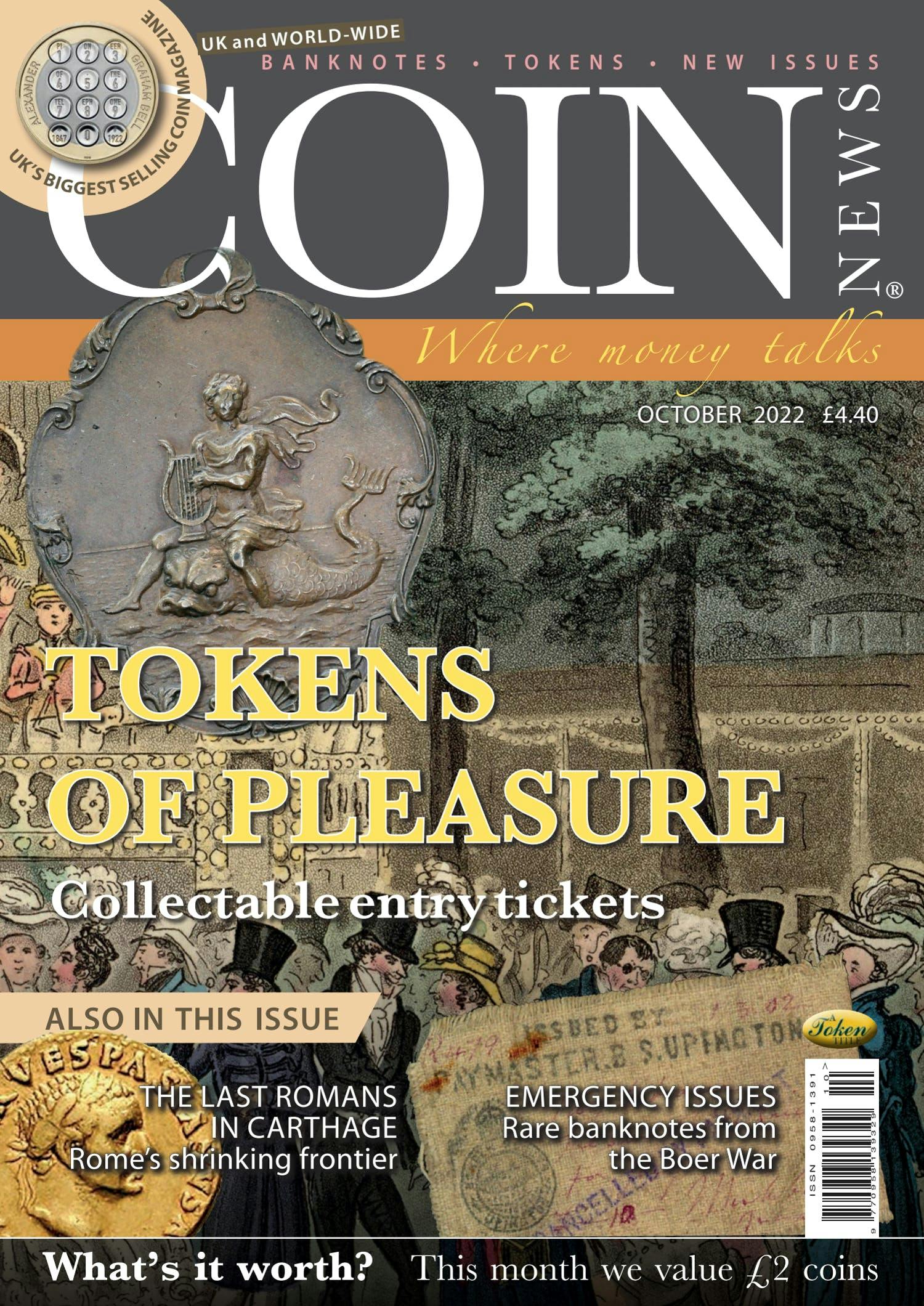Tokens for pleasure
Volume 59, Number 10, October 2022
On Display A RECENT trip to Portsmouth Historic Dockyard to research an article for our sister publication MEDAL NEWS saw me visiting not only Nelson’s Flagship HMS Victory (sadly not quite as splendid as she was when I last went to Portsmouth, she’s currently undergoing repairs and is under cover) but also Henry VIII’s once magnificent Mary Rose too. Last time I saw the battleship that sank so disastrously in the Solent in 1545, only to be raised in 1982 (the less said about the boom crashing down the better), she was lost in a cloud of water spray as her timbers were still being constantly doused to ensure they didn’t simply crumble away. Now though, things are very different, and the museum built around the hull—literally a stone’s throw from Victory—has really come into its own. Now, instead of a vague shape behind the mist, the hull of the Mary Rose is clearly visible and the walkway that takes you past her makes you feel like you are actually on board (well sort of) with the ship on one side and exhibits like cannon on the other (there’s a helpful plaque on the floor that tells you you’re standing where the main mast would have been so you can orientate yourself). On the top deck, you can even experience seeing the ship not hidden by protective glass (admittedly you have to enter through “airlock” doors to ensure the air quality remains stable). The ship itself is fascinating but, perhaps as you would expect, it does take some imagination to see her as she once would have been; the museum does its best to help your imagination along with holograms, projections and sounds, detailed pictures and a fun little film experience at the beginning that attempts to put you on board the vessel as she sank, but even so you can’t help but sometimes just see a lot of wood that’s been buried under the seabed for hundreds of years! However, you don’t just go to the Mary Rose Museum to see the hull, you go for the other exhibits too. These are the things I well remember making the news, as they were brought to the surface before the ship herself came up and there are some amazing items on display. Everything is either remarkably well preserved or, where metal has rusted away for example, carefully reconstructed to show how it would have looked (but with very non-Tudor plastic, there’s no confusion as to what was brought up from the depths and what is 21st century, they’re very careful about that). There are weapons, musical instruments, shoes, clothing, even skulls and bones complete with reconstructions of how the living person might have looked based on their skeleton. There are tools, plates and, of course, there are coins too. In fact, there’s an entire exhibit devoted to the ship’s purser (his money chest was brought up intact) and the finances on board and, naturally, that includes coins. The silver coins are, generally, in a bad way (at least from a numismatist’s point of view) and are often found lumped together but the gold . . . ah! the gold—it’s almost as if it were minted yesterday, and in a way it was. For example, you have at least two 1545 half sovereigns on display —these brand-new coins (the half sovereign was first struck in the reign of Henry VIII, see page 13) were quite possibly struck to go straight to the Mary Rose or, if they weren’t, they barely saw circulation elsewhere and were lost when she sank that very year. These coins have probably never been used, never changed hands, they went to the Navy and went down with the ship—now they are on show to the public in 2022. Seeing them there, glinting beautifully in the subdued lighting of the Museum, complete with useful information panels about the purser and his role on board the ship and the coins themselves, reminded me that all too often we collectors view coins only as objects in their own right and we sometimes forget that they were never (at least back then) intended for collectors to hide away, never seen as works of art just to be admired but rather they were struck to be used. They were part of society, part of social history and it is, perhaps, a shame that now they are housed in museums, in galleries, away from so many other things that might give them context—not so in the Mary Rose Museum and I highly recommend it! Indeed, so impressed was I with the way the Museum was laid out and the way that coins were given a part within the larger story, that I’d like to hear more about museums and exhibits that do similar things—do you have a museum near you that includes coins as part of history rather than treat them as things to be admired and gazed at in their own right? Are they being used to tell the wider story rather than seen just as objects to look at with no connection to the world around them? Has your local museum remembered that few coins, no matter how beautiful, were ever meant to be viewed as a painting or sculpture might be? If it has, then please let me know, send me photos—we’ll feature a few and get others to enjoy them too!
Order Back Issue
You can order this item as a back issue, simply click the button below to add it to your shopping basket.

